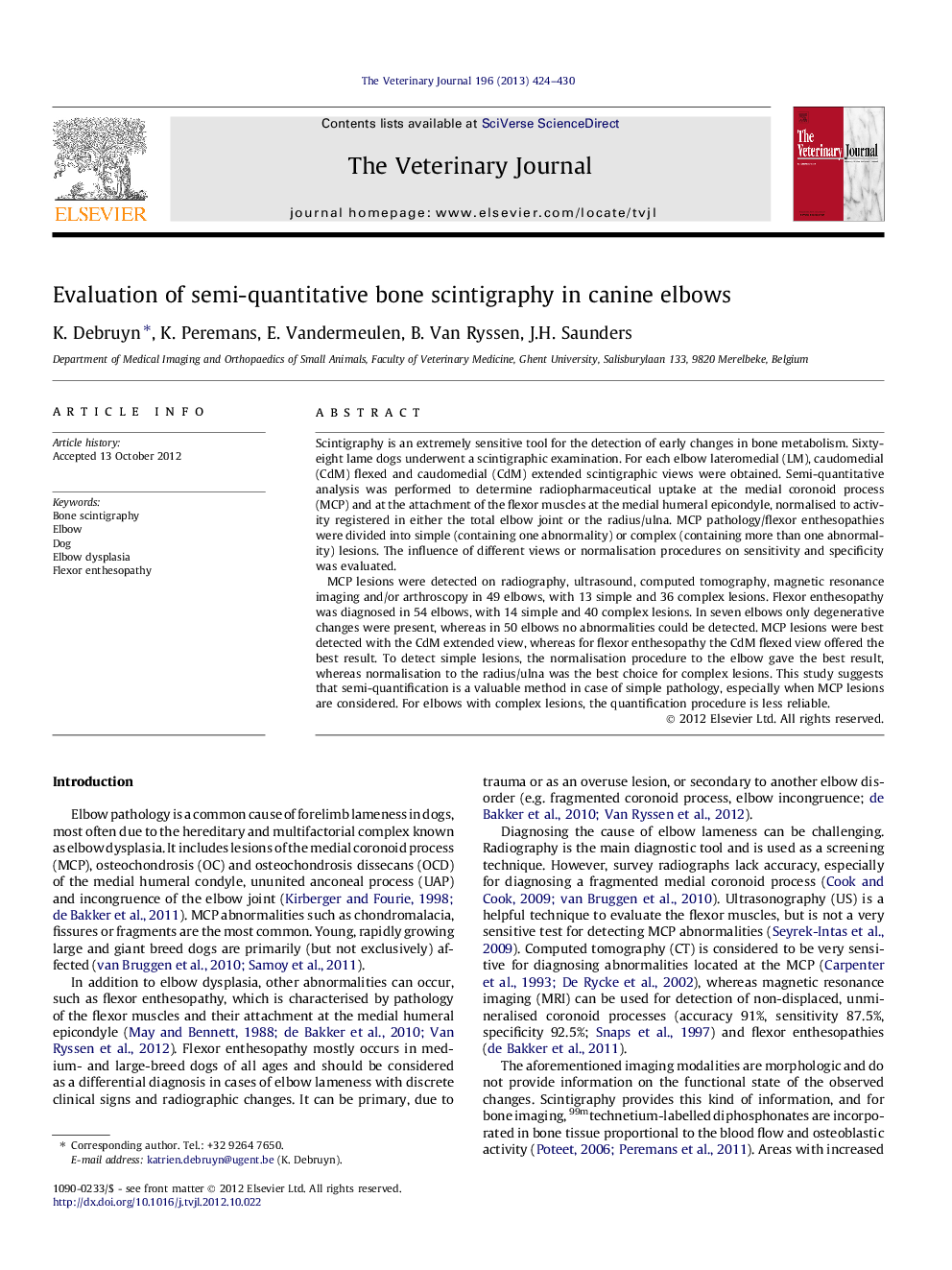| Article ID | Journal | Published Year | Pages | File Type |
|---|---|---|---|---|
| 5798712 | The Veterinary Journal | 2013 | 7 Pages |
Scintigraphy is an extremely sensitive tool for the detection of early changes in bone metabolism. Sixty-eight lame dogs underwent a scintigraphic examination. For each elbow lateromedial (LM), caudomedial (CdM) flexed and caudomedial (CdM) extended scintigraphic views were obtained. Semi-quantitative analysis was performed to determine radiopharmaceutical uptake at the medial coronoid process (MCP) and at the attachment of the flexor muscles at the medial humeral epicondyle, normalised to activity registered in either the total elbow joint or the radius/ulna. MCP pathology/flexor enthesopathies were divided into simple (containing one abnormality) or complex (containing more than one abnormality) lesions. The influence of different views or normalisation procedures on sensitivity and specificity was evaluated.MCP lesions were detected on radiography, ultrasound, computed tomography, magnetic resonance imaging and/or arthroscopy in 49 elbows, with 13 simple and 36 complex lesions. Flexor enthesopathy was diagnosed in 54 elbows, with 14 simple and 40 complex lesions. In seven elbows only degenerative changes were present, whereas in 50 elbows no abnormalities could be detected. MCP lesions were best detected with the CdM extended view, whereas for flexor enthesopathy the CdM flexed view offered the best result. To detect simple lesions, the normalisation procedure to the elbow gave the best result, whereas normalisation to the radius/ulna was the best choice for complex lesions. This study suggests that semi-quantification is a valuable method in case of simple pathology, especially when MCP lesions are considered. For elbows with complex lesions, the quantification procedure is less reliable.
